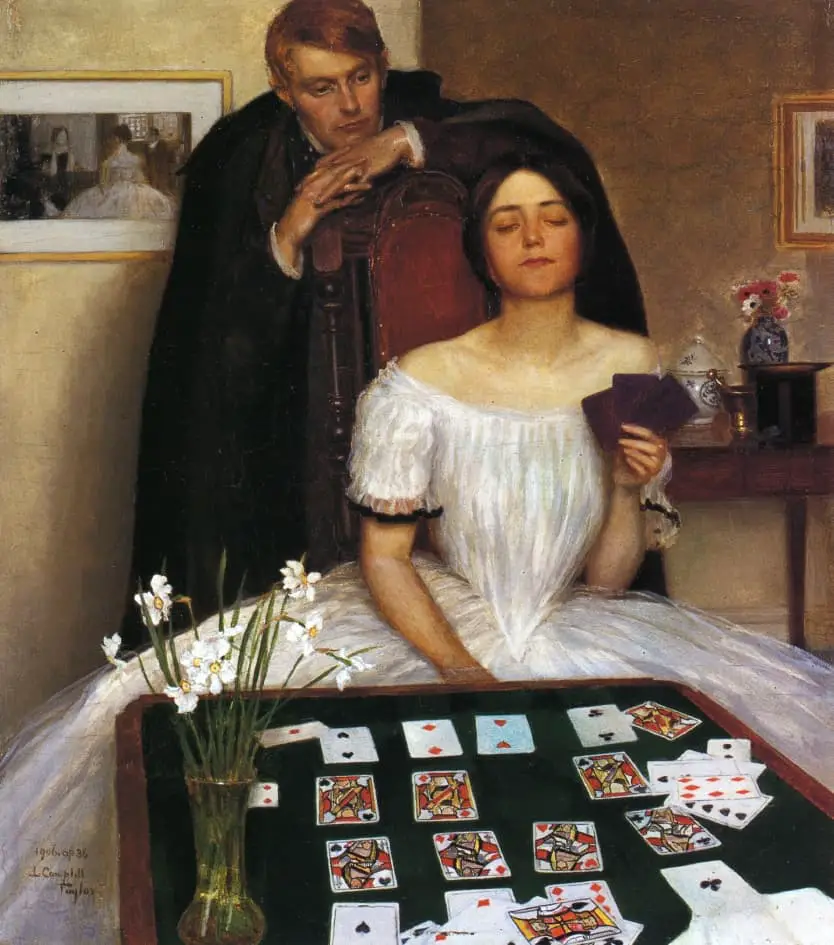There are many, many words and phrases used by different commentators to catalogue the many ways of narrating fiction. The terms overlap.
Some have called the writing style of modernists such as Mansfield, Lawrence and Woolf ‘narrated monologue’. What is that, exactly? And what does it look like on the page?
Narrated monologue presents the character’s mental discourse in the guise of narrator’s discourse.
Suzanne Keen
Typically, the work will be written in third person preterite. (This looks like the simple past tense in English.)
- The preterite is a tense/verb form denoting events that took place or were completed in the past.
- The preterite also implies that the action had a definite beginning and a definite end.
Germans invented a phrase for this style of narration: erlebte Rede. Basically, erlebte Rede refers to a rendering of a character’s thoughts in their own idiom while maintaining the third-person form of narration. You may notice right away, narrated monologue looks very similar to several other popular modes of narration.
THE DIFFERENCE BETWEEN NARRATED MONOLOGUE AND FREE INDIRECT SPEECH
Free indirect discourse is one of the most powerful tools in an author’s trick-bag. It lets our narrators dip freely in and out of a character’s stream-of-consciousness, accessing their thoughts, feelings, opinions, even their vocabularies and other attributes of their speech patterns, without having to say (for instance) “Barry thought” or “Barry felt.” That Barry’s thoughts and feelings (as opposed to the third-person narrator’s objective thoughts) are what we are being made privy to, is implied by the language and syntax by which they are conveyed.
Peter Selgin
Narrated monologue is very similar to free indirect speech. But free indirect speech omits tags like ‘she thought’. Technically, a single work can flow naturally between narrated monologue and free indirect speech as the unseen narrator gets deeper and deeper into the focalising character’s mind.
I feel like ‘narrated monologue’ is ‘free indirect speech’,but at an earlier stage of development. These days, if you’re a writer seeking feedback from a critique group or editor, you’ll probably be urged to do away with tags like ‘she thought’. Contemporary readers don’t need them. Paragraphing is key. (New person, new paragraph. Ergo, same person, same paragraph.)
THE DIFFERENCE BETWEEN NARRATED MONOLOGUE AND INTERIOR MONOLOGUE
Narrated monologue is different again from interior monologue because it maintains the person and tense of authorial narration. In other words, narrated monologue looks like third person but it’s actually not. It’s sort-of-but-not-exactly coming out of the character’s head.
Interior monologue is definitely coming straight out of the character’s head. (Or so the reader is to believe.)
ADVANTAGES OF NARRATED MONOLOGUE
- Along with free indirect speech, and even a little more so, narrated monologue gives the writer a double voice: The voice of the character and the voice of the narrator. The narrator’s commentary comes across as quite subtle.
- The reader won’t be consciously aware of the distinction between the character’s voice and the narrator’s voice. This is a pretty sneaky (and effective) way of coaxing readers to feel a certain way about characters and situations.
- The reader is able to observe the thoughts and feelings of a character even if those thoughts aren’t explicit in the character’s mind. This is perfect for writing very young or somehow naive characters.
But is there any advantage in ‘narrated monologue’ over ‘free indirect speech’ in contemporary work? That’s a good question. I suspect there is a case for keeping dialogue tags in some cases, and perhaps writers do want something that is not quite interior monologue and not quite free indirect speech. Perhaps there are reasons for wanting the ‘hand of the unseen narrator’ to remain in the work without full on third person or omniscience.
For example, the writer may be aiming for a style which sounds like it came out of the early 1900s, whether satire or written straight.
Good luck getting that rationalisation past your critique group.
Header painting: Leonard Campbell Taylor – Patience, in which I imagine the man is the narrator. He sees the focaliser’s ‘cards’ and narrates subtly to the reader.

